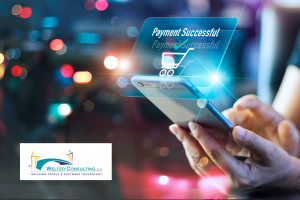One unusual question that may arise is when a client wishes to change from INFR (international financial reporting) standards to the GAAP (generally accepted accounting principles) standards. Most of the available literature covers the opposite: GAAP to INFR.
Currently, there is no authoritative standard to refer to when changing from INFR to GAAP. Financial Standards Accounting Board FASB ASC 250 provides guidance solely for reporting accounting changes within the same basis, not for moving from one basis to another. However, we can refer to several nonauthoritative sources and draw inferences to guide the transition.
INFR: Not a Special Purpose Framework
A publication by the AICPA’s Center for Plain English Accounting (CPEA), “Common Questions About Special Purpose Frameworks” points out that IFRS does not constitute a “special purpose framework.” Why is this important? Because nonauthoritative guidance for special purpose frameworks does exist. The AICPA designated the International Accounting Standards Board (IASB) as the body to establish professional standards, including those pertaining to international financial accounting and reporting principles. Because of this, INFR may be considered generally accepted accounting principles. Most literature refers to changes within the same accounting basis, not moving from one basis to another.
Suggestions to Make the Standards Switch
So, if there are no authoritative guidelines, and the nonauthoritative guidelines aren’t clear, then what? Deloitte published a paper in 2020 attempting to address this issue as well. First-time adoption of GAAP after using INFR is a bit more complex than converting INFR to GAAP, but it can be done.
Deloitte’s authors suggest the following:
- Organizations should review all historic transactions since their inception to determine whether the accounting for such transactions would have been different had U.S. GAAP been applied. If that sounds tricky it’s because it is. For example, you’ll need to consider all historic business combinations and whether there should be any amounts (goodwill, fair value adjustments to long-lived assets) that should be included in the opening balance sheet.
- Companies moving from INFR to GAAP usually complete a full retrospective application. One of the key principles of IFRS 1 is to apply retrospectively all standards effective as of the reporting date of the entity’s first IFRS financial statements (with some exceptions and exemptions). However, U.S. GAAP requires the application of the standard effective as of the transaction date and apply new or changes in accounting policies in accordance with the respective transition requirements of each standard.
What if your company has a very long history? Long-established companies converting to GAAP may need to refer to the previous accounting hierarchy and original pronouncements to determine the appropriate accounting for a particular transaction.
Disclosing Such a Change
For successor auditors, the question arises as to how to report such a change. Such changes should be reported as a “change in accounting standards” or “change in accounting basis” (not change in accounting) within reports. This makes it clear what has changed. Successor auditors would be wise to proceed with caution if inheriting such a situation and carefully consider all options. The lack of authoritative guidelines makes it challenging, but not impossible. Reading between the lines, making decisions that err on the side of transparency and full disclosure, and common sense can go a long way towards making statements clear.
Welter Consulting
Welter Consulting bridges people and technology together for effective solutions for nonprofit organizations. We offer software and services that can help you with your accounting needs. Please contact us for more information.








Recent Comments